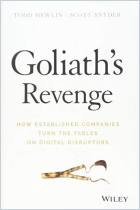Únase a getAbstract para acceder al resumen.

Únase a getAbstract para acceder al resumen.
Ron Adner
Winning the Right Game
How to Disrupt, Defend, and Deliver in a Changing World
MIT Press, 2021
¿De qué se trata?
Competition is no longer a game of start-ups versus incumbents. You must prepare for ecosystem of disruptive threats.
Recommendation
This important work from strategy professor Ron Adner might make you rethink what you “know” about disruption. Most advice on the topic still pits start-ups against incumbents. Adner demonstrates that leaders must add ecosystem disruption to their radar. Starting with the famous but false tale of Kodak’s demise, he argues that the boundaries of industry are giving way to cross-industry ecosystems where new value architectures – which partners create and defend – matter most. These systems remain poorly understood. Adner presents tools to help you see the threats and devise ecosystem strategy.
Summary
About the Author
Ron Adner, professor of strategy and entrepreneurship at Dartmouth University Tuck School of Business, speaks and consults on strategy worldwide.




















Comment on this summary